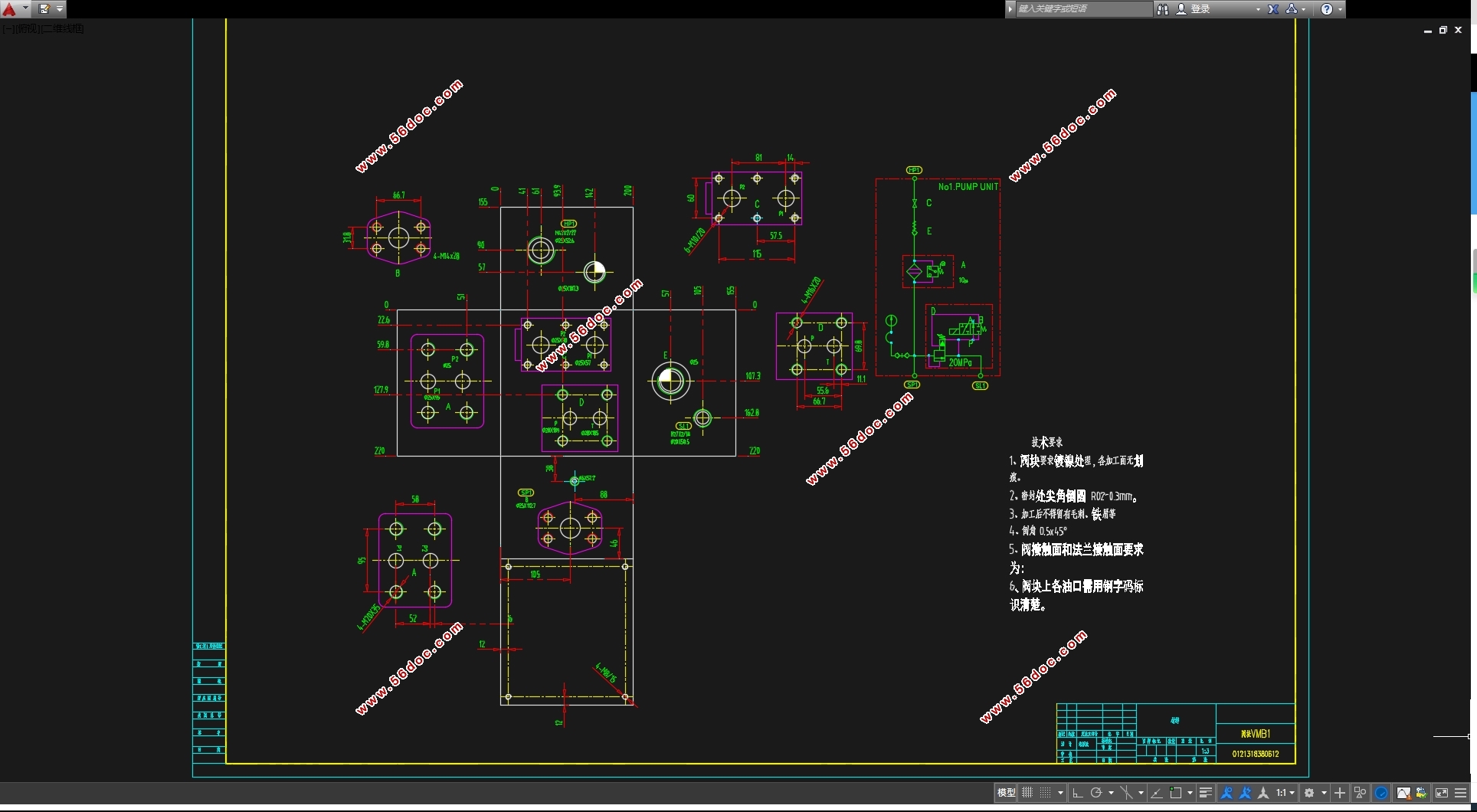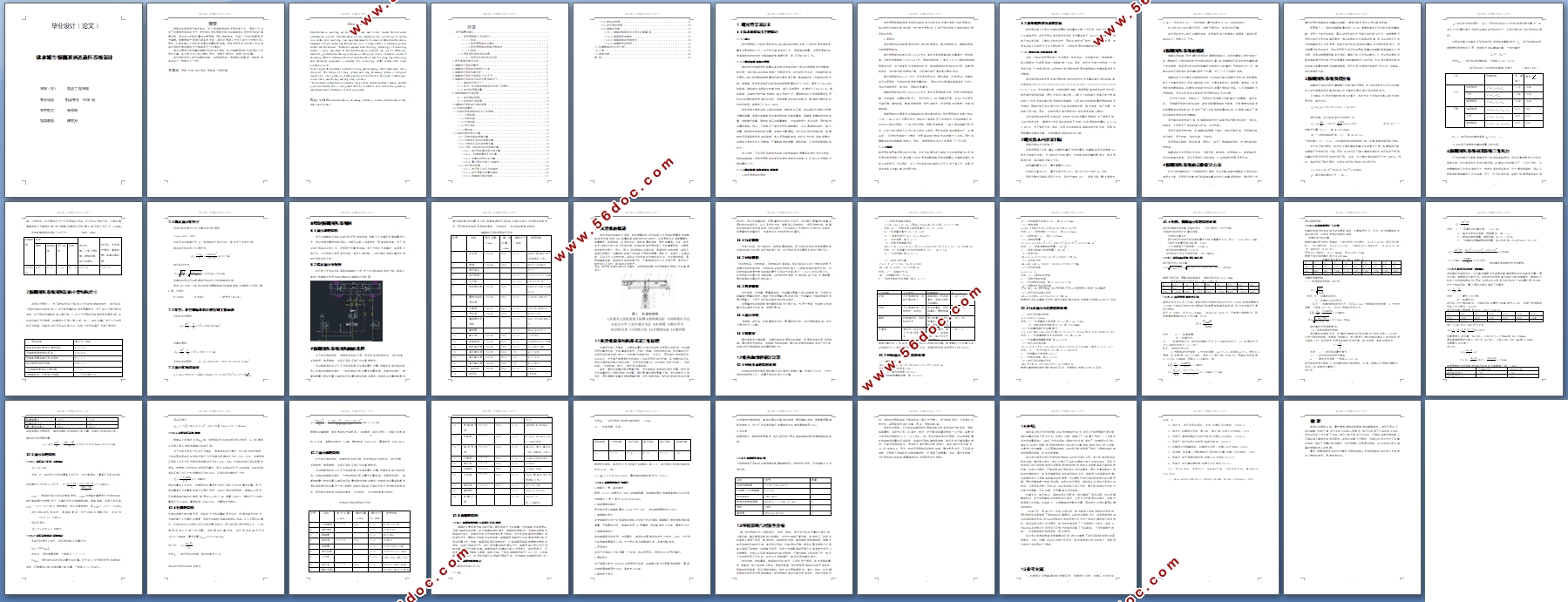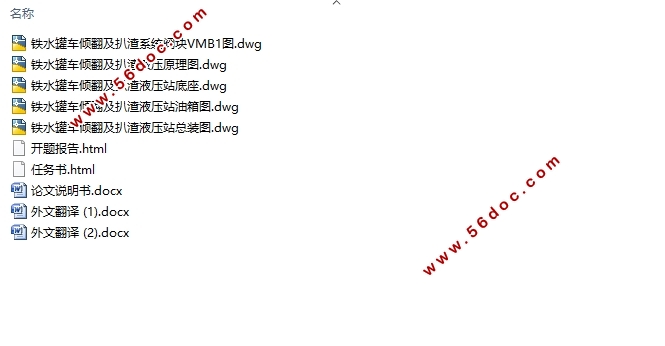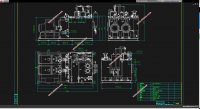铁水罐车倾翻及扒渣液压系统设计(含CAD图)(任务书,开题报告,外文翻译,论文说明书13000字,CAD图5张)
摘要
脱硫与扒渣是两个相互独立、且又紧密联系的铁水预处理工艺,脱硫工艺决定了处理铁水含硫的水平,而扒渣则是将脱硫处理后的高硫渣从铁水中去除的重要手段,是决定入炉硫总量的主要因素。因此相较而言,扒渣工艺对控硫显得更为重要。如果脱硫产物得不到有效去除,再好的脱硫工艺也不能充分发挥作用。因此,从某种意义上说扒渣效果决定最终脱硫率。因此采用先进的扒渣工艺与设备对系统控硫与降低生产成本是十分必要的。
本文主要设计铁水罐车倾翻及扒渣液压系统,针对倾翻系统和扒渣系统分别设计计算,各个部分运行均应操作灵活,速度平稳可控,起停及时可靠。
液压系统由中心液压站集中供油,各用油设备之间管路应能隔离,确保各设备的运行、检修互不干扰。
关键词:脱硫 扒渣 液压系统 脱硫率 平稳可靠
Abstract
Desulfurization and slag are two independent, and closely contact the hot metal pretreatment process, desulfurization process determines the processing of molten iron sulfur levels, and slag is an important means to be removed after desulfurization treatment of high sulfur slag from molten iron, is a major factor in determining total sulfur into the furnace. Therefore compared with drossing, technology of controlling sulfur is more important. If the desulfurization products can not be effectively removed, good desulfurization process can not fully play its role. Therefore, in a sense skimming effect to determine the final desulfurization rate. So using slag technology and advanced equipment is necessary for controlling sulfur system with lower production costs.
In this paper, the hydraulic system for tilting and skimming of hot metal tank cars is designed. The design of tilting system and slag skimming system is designed respectively. The operation of each part should be flexible, the speed is stable and controllable, and the stop and stop time is reliable.
The hydraulic system shall be centrally supplied by central hydraulic station, and the pipelines between the oil equipment shall be isolated so as to ensure the operation, maintenance and interference of each equipment.
Key words: desulfurization, skimming, hydraulic system, desulfurization rate, stable and reliable
基本内容以及目标如下:
在铁水脱硫工艺中,罐车运载铁水罐至扒渣位置后,将罐倾斜至扒渣角度(以铁水不能溢出为准),扒渣机进行扒渣操作,扒渣结束铁水罐恢复直立,然后脱硫再扒渣,再运载到后续工艺点。
铁水罐容量为90T,最大重量为120T。
扒渣机自重为40T,最大扒渣力为20T。每小时工作一次约20分钟。
用两个操作手柄实现四个方向,即水平旋转90°、垂直升降(最大高度为0.4m)、扒杆抬头25°、扒杆伸缩(最大距离为2.5m)的组合动作。
各个部分运行均应操作灵活,速度平稳可控,起停及时可靠。
液压系统由中心液压站集中供油,各用油设备之间管路应能隔离,确保各设备的运行、检修互不干扰。




目录
1 研究背景及意义 1
1.1铁水预脱硫工艺的探讨 1
1.1.1前言 1
1.1.2铁水预脱硫的必要性 1
1.1.3铁水预脱硫的原理及脱硫剂 2
1.1.4结语 3
1.2预处理扒渣技术的发展 3
1.2.1铁水包扒渣技术及作用 3
2研究基本内容及目标 4
3倾翻液压系统的概述 4
4倾翻液压系统的总体设计方案 5
5倾翻液压系统负载分析 6
6倾翻液压系统初选系统工作压力 7
7倾翻液压系统液压缸的主要结构尺寸 8
7.1确定液压缸尺寸 8
7.2缸径、杆径取标准值后的有效工作面积 9
7.3液压缸所需流量 9
8绘制倾翻液压系统图 10
8.1液压源的选择 10
8.2拟定液压系统图 10
9倾翻液压系统液压阀的选择 10
10扒渣机的概述 12
11扒渣机设备结构形式及工作原理 13
11.1行走机构 13
11.2回转机构 13
11.3扒渣机构 13
11.4液压系统 14
11.5操作室 14
12机构和部件设计计算 14
12.1回转支承的选择计算 14
12.2回转液压马达的选择计算 15
12.3行走液压马达的选择计算 16
12.4升降,俯仰液压缸的选择计算 16
12.4.1液压缸缸筒的设计和计算 16
12.4.2、缸筒壁厚和外径计算 17
12.4.3活塞杆的设计与计算 17
12.4.4最小导向长度H的确定 19
12.5液压泵的选择 20
12.5.1液压泵工作压力的确定 20
12.5.2液压泵输出流量的确定 20
12.5.3选择液压泵的规格 21
12.6电机的选择 21
12.7液压阀的选择 22
12.8油箱的选择 23
12.8.1油箱的结构特点及设计注意事项 23
12.8.2油箱容积的确定 23
12.8.3油箱结构的详细设计 24
12.8.4油箱配件的选用 25
13环境影响与经济性分析 25
14小结 27
15参考文献 28
谢 辞 29
|









